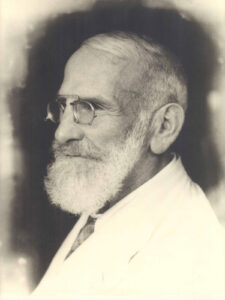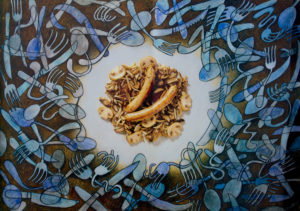
A brief history of vegetarianism in Switzerland
Vegan and vegetarian diets are considered healthy and sustainable. A look at the history of vegetarianism in Switzerland shows how giving up meat created a market of the future.

Muesli avant-garde


Green food

Meat – An exhibition on the Inner Life

In the exhibition ‘Meat – An exhibition on the Inner Life’, the National Library takes the current discussion about meat-based, vegetarian and vegan nutrition as an opportunity to explore historical, literary and artistic perspectives on this special substance.
For a look at the exhibition, visit the website www.nationalbibliothek.ch.



